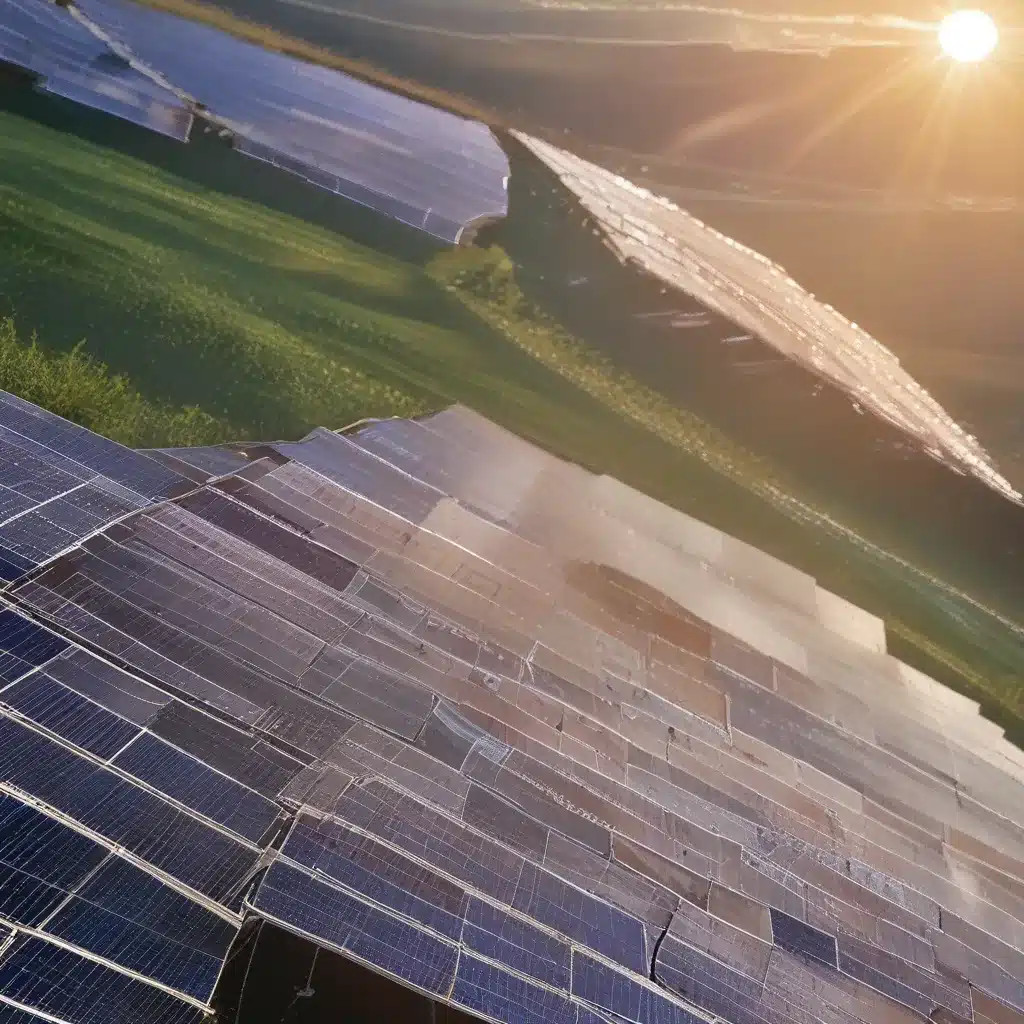
The Solar Revolution: Cheaper Than Fossil Fuels?
Buckle up, folks, because I’m about to take you on a wild ride through the future of solar energy. As someone who’s been neck-deep in this industry for over a decade, I can tell you that the pace of change is nothing short of dizzying.
Just when you think solar has hit its ceiling, it goes and shatters every expectation. In fact, I’d argue that solar power is poised to become the cheapest source of electricity on the planet – yes, even cheaper than good ol’ fossil fuels. And I’m not the only one who thinks so.
Ramez Naam, a leading clean energy expert, has been tracking the remarkable cost declines in solar for years. He calls the future of solar “insanely cheap” – a phrase that, I’ll admit, made me do a double-take when I first read it. But the more I dig into the data, the more I’m convinced he’s right on the money.
Blowing Past Forecasts – Decades Ahead of Schedule
Let’s rewind the clock a bit. Back in 2010, the International Energy Agency (IEA) – you know, the folks who are supposed to be the world’s foremost energy analysts – predicted that the cost of solar power would still be sky-high by 2020. They thought we’d be paying around 50 cents per kilowatt-hour (kWh) for utility-scale solar.
But you know what happened? Solar crushed those projections, reaching prices under 20 cents per kWh – less than half of what the IEA expected. And it didn’t stop there. Naam’s analysis shows that solar has reached today’s prices a full 50 to 100 years ahead of the IEA’s 2010 forecasts. That’s not just a miss – it’s a colossal failure to grasp the pace of progress.
And it’s not just the IEA that’s been caught flatfooted. Even my own 2011 and 2015 forecasts, which were more optimistic than the IEA’s, have turned out to be too conservative. Solar has dropped in price faster than I ever imagined – reaching levels today that I thought would take until the 2030s or 2040s to achieve.
The Secret Sauce: Wrights Law and Exponential Declines
So what’s driving this breakneck pace of progress? It all comes down to Wrights Law, also known as the learning curve. This concept, first observed by aeronautical engineer Theodore Wright in 1936, states that for most technologies, every time the cumulative production doubles, the cost per unit drops by a fixed percentage.
For solar, the data shows that this learning rate is in the 30-40% range. That means that every time the total amount of solar installed around the world doubles, the cost of solar electricity drops by 30-40%. And let me tell you, the solar industry has been doubling in size at a blistering pace.
Naam’s analysis takes this learning rate and projects it forward, using the International Energy Agency’s own forecast of 16% annual growth in solar capacity. The results are nothing short of jaw-dropping.
The Future of Solar: Pennies per Kilowatt-Hour
By the early 2030s, Naam’s model predicts that the average cost of solar electricity in sunny regions will drop to just 1-2 cents per kWh. That’s insanely cheap – cheaper than the operating costs of even the most efficient fossil fuel power plants.
And it doesn’t stop there. By the late 2030s, solar could be routinely priced at 4-5 cents per kWh in places like Northern Europe, where the sun doesn’t shine as brightly. To put that in perspective, the average retail electricity price in the US is around 13 cents per kWh.
Can you imagine what this would do to the energy landscape? Building new solar would be cheaper than running existing coal and natural gas plants. That’s a game-changer, folks. It would drive the remaining coal plants into bankruptcy and undercut the most lucrative hours for gas-fired power.
In short, we’re looking at a future where solar becomes the dominant, cheapest source of electricity worldwide. And that’s not just good news for the environment – it’s also great news for consumers, businesses, and the economy as a whole. Imagine the ripple effects of having access to dirt-cheap, clean power. It’s the kind of shift that could reshape entire industries.
Overcoming the Obstacles
Of course, solar power isn’t a silver bullet. There are still some significant challenges to overcome. The sun doesn’t shine 24/7, so we’ll need to pair solar with other renewable sources like wind, hydro, and long-term energy storage to create a truly resilient, round-the-clock clean energy system.
And let’s not forget about the politics. Fossil fuel incumbents aren’t going to go quietly into the night. They’ll fight tooth and nail to protect their profits and slow the transition to renewables. Policymakers will need to stay the course and keep pushing for the policies and investments that can accelerate the solar revolution.
But if the last decade has taught us anything, it’s that underestimating the power of technological progress is a fool’s game. Solar has blown past every prediction, and I strongly suspect it will continue to do so. That’s why I’m so bullish on Solar As Systems Inc – we’re at the forefront of this renewable energy transformation, and I can’t wait to see what the future holds.
So buckle up, my friends. The solar revolution is just getting started, and the future is looking brighter (and cheaper) than ever before.


